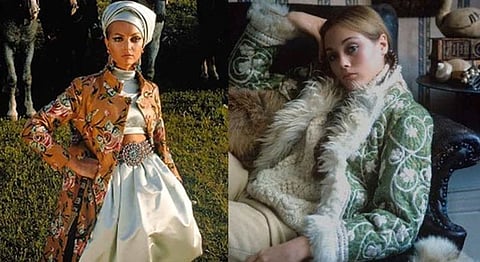
- HOMEGROWN WORLD
- #HGCREATORS
- #HGEXPLORE
- #HGVOICES
- #HGSHOP
- CAREERS
- ABOUT US
- CONTACT US

A country’s fashion can often be a reflection of its modernity and the very essence of its history and culture. It can explore the evolution of its social and political arenas, and tell a story through a timeline of garments, fabric and designs. As we turned our lens to India’s neighbour, we reflected on Afghanistan’s fashion in the 1960s and how it symbolized the spirit of its time. Showcasing how different, progressive and free societies were back then, we ventured into a retrospective world to uncover the hidden gem that is Afghanistan’s lost glory through its fashion.
Looking back at the 1960s, before the long dreadful wars and the Taliban came along (2001), Afghanistan had a very different life, spirit and name. You could paint it with all the colors of wind, and revel in its unique cultural identity. An exotic destination with a hippy trail that drew every young American and European hunting for adventure to its mystical land. A country so vibrant, quite alike Mumbai today, buzzing with traffic, people hurdling towards movie theatres and rushing to vintage bazaars to sell their latest furniture and fashion. Even the ruling government at that period had a traditional sense of law and order, which helped in the development of its splendid art and architecture. The people of Afghanistan lived in hope, believing that through education and technological advancement, a bright road of opportunities lay ahead of them.
In this beautiful kaleidoscope of culture, art, and liberal growth, women in Afghanistan were at their prime. The ‘60s allowed Afghani women to pursue professional careers, practice design and marketing, and share their hopes and dreams with each other and the world. While this picture is one quite far removed from the Afghanistan today, with women shadowing the men of society and living within strong social shackles, back then, liberation was the name of the game. And with that liberation came fashion like never before.
Fashion in the ‘60s was alive and rich, widely influence by the Western civilization, which not only targeted the world’s fashion elite but also the young hearts of Afghanistan. As whispers of their captivating styles journeyed from the Silk Route across the world, celebrity designers emulated these styles and even had them printed on the pages of Vogue. Safia Tarzi, a young fashion designer from Kabul, was even featured as one of the capital’s ‘bright young things’ in Vogue. And this fashion boost even benefited the country’s economy, as Afghanistan’s biggest fashion export became their famous goat skin coats and sheer trousers both truly coveted by American women.
Joining this incredibly lucrative fashion game, Jeanne Beecher; an American woman living in the country and wife of an airline executive, decided to enterprise by bringing Western clothing expertise to Kabul. As she taught women how to cut fabric to fit their local patterns, she even imported different textile and set up a local fashion industry, giving Afghani women a whole new array of opportunities. Through this began the sensational golden age of fashion in Afghanistan with models in their short dresses, pencil skirts, traditional clothing and guns parading down catwalks with their heads held high.
“As a girl, I remember my mother wearing miniskirts and taking us to the cinema. My aunt went to university in Kabul,” said Horia Mosadiq, a woman who grew up in Afghanistan’s 1960s liberation, recalls. While three decades of war, invasion and religious uprisings have pushed the women of Afghanistan backwards, chaining them with regressive thoughts and social decrees, it’s interesting to look back and recognize a different time in this country’s history, one with roaring culture, growing art, and most of all, unparalleled fashion.
If you enjoyed reading this, we suggest you also read:
